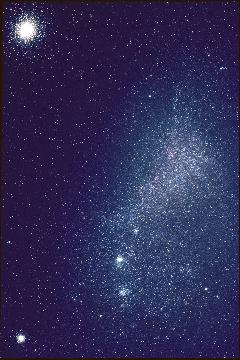
The Small Magellanic Cloud and 47 Tucanae
[Image: Alan Brockman - Ningaloo Skies]

ASTRONOMY
Astronomy is the science that studies the things we see in the far sky: stars, planets, asteroids, comets, nebulae, galaxies and many other strange objects that have been discovered since Galileo first turned a telescope toward the heavens 400 years ago.
Although professional astronomers use equipment that can be very expensive, the universe is at your back door and to study it doesn't have to cost a lot. There are between 2000 and 3000 stars visible in the night sky to the unaided eye, and even a small pair of binoculars can show an amazing amount of detail and objects not visible to the eye.
Learning your way around the sky is a good way to start. And if you wish to look further there are observatories and planetariums that are open to the public and staffed by people only too eager to talk about their interests.
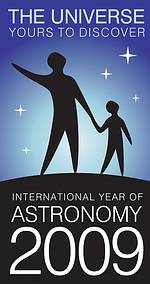 |
2009 is the international year of astronomy. This is a good time to learn more about the Universe in which you live. Explore the night sky and expand your horizons. |
Some goals you might like to set yourself:
STARS
Stars make up the majority of the objects that we see in the night sky. Stars are really suns, and our Sun is a star. Stars appear much fainter than the Sun simply because they are much further away.

Stars differ in brightness for two main reasons, their intrinsic brightness and their distance from the Earth. Stellar distances and huge and are measured in light years, which is the distance light travels in one year. This is 9.5 trillion (million million) kilometres. When we look at a star we see how it was in the past, not how it is now. All the stars we see in the night sky are in our own galaxy, the milky way, and are thus relatively close compared to the overall size of the universe.
 |
Stars not only vary in brightness but also in colour. The colour depends on the temperature of the star, which varies from 2000 to 50,000 Celsius. Stars are classified by their colour into alphabetic types. We can remember the order by the first letter of each word in the phrase "Oh, Be A Fine Girl, Kiss Me". The Sun is a G-type star, right in the middle, with a temperature of 6000 degrees. |
Variable stars vary in brightness. Binary stars are two stars close to and often orbiting each other. Astronomers think that about half of all stars are binary, even though we can't see this with our eyes (because most binaries stars are too close together).
The brightest stars have mainly Arabic names.
To make it easier to find one's way around the sky, stars are grouped into 88 'constellations' which have mostly Greek or Latin names. Not many of these groupings resemble the name given to them, but some do, for example the 'southern cross' and 'scorpius' the scorpion.
PLANETS
Although most stars appear fixed in the sky (although the night sky as a whole appears to move around the Earth), there are five bright objects that we can see wandering around the other stars. These are the planets, and they are much closer to us than any other star we see in the night sky. They are bound to the Sun by gravity, along with the Earth and other planets too faint to see. Together, they form the solar system.
 The planet Jupiter showing its banded clouds, giant red spot and other lesser spots. |
 Saturn, showing its glorious ring structure. |
| These images, taken by the Hubble Space Telescope, show three of the planets visible to the naked eye. [STScI/NASA/ESA] | Mars, showing its red deserts and icy polar cap.  |
The solar system also contains a large number of smaller bodies: asteroids, comets and meteoroids.
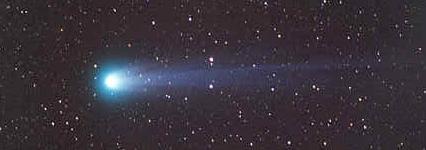
Some other stars have planets around them, and astronomers are currently trying to find more, particularly planets that might be like Earth.
TELESCOPES AND OBSERVATORIES
Telescopes vastly improve our view of the universe in which we live. Telescopes are often housed in buildings we call observatories.
Perth Observatory |
Skymapper at Siding Spring |
However, not all telescopes are the traditional optical telescopes. Many radio telescopes are now used to map the radio signals from celestial objects.
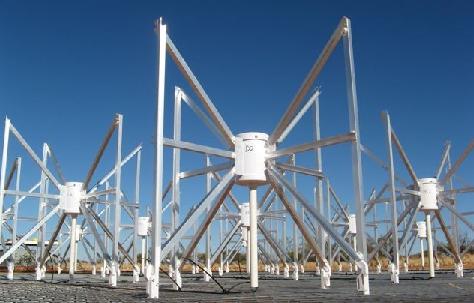
Some telescopes are sent into space, to avoid the bad effects of the Earth's atmosphere. Some types of astronomy (X-ray and gamma ray astronomy) can only be conducted from space.

STRANGE AND BEAUTIFUL
Stars and planets are of course not the only things in the sky. The glow of light across the sky known as the milky way is the vast collection of stars that make up our galaxy. Although we cannot directly see the shape of our galaxy, we can see other galaxies, and radio astronomical evidence leads us to believe that it is like some spiral galxies, as shown below.
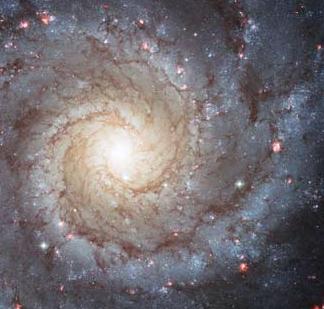 M74 M74 |
 M51 M51 |
Within our galaxy we can see many patches of fuzzy light we term nebulae. When examined with large telescopes these often show beautiful shapes and colours. Many nebulae are believed to be the aftermath of a dead or dying star. The ones shown below are the cat's eye and the butterfly nebulae.
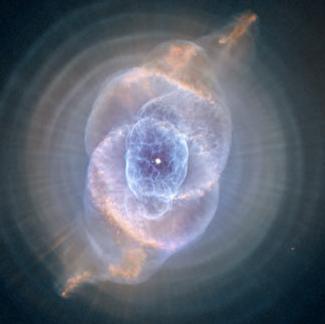 |
All images in this section are from the Hubble Space Telescope [STScI/ NASA/ESA] |
 |
Many other strange and fantastic objects are known, while some are waiting for us to discover them. Many observatories and organisations make their images available via the world wide web.
Go out and explore your universe today!
 Australian Space Academy
Australian Space Academy